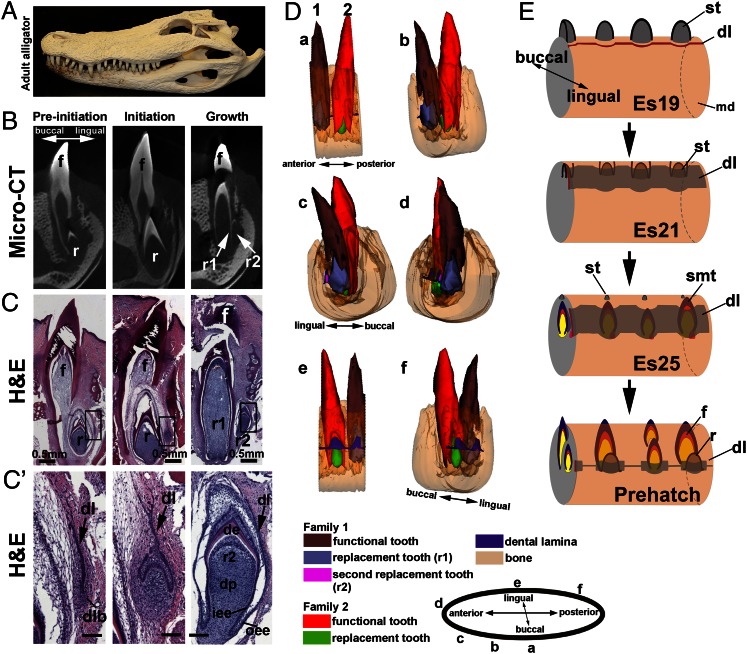Fig. 1.
Configuration of alligator tooth family units. (A) Adult alligator has 20 teeth in each quadrant. (B) Micro-CT and (C and C′) H&E staining of paraffin sections from a 1-y-old alligator jaw. (C′) Dental lamina, high magnification. (Left) Preinitiation stage. (Center) Initiation stage. (Right) Growth stage. Note that the dental laminae are not visible by micro-CT. The definition of the three stages is shown in Table S2. (D) 3D reconstruction of two tooth families from a 3-y-old alligator. Tooth family unit 1 is in growth stage, whereas family unit 2 is in preinitiation stage. The sections of H&E staining are shown in Fig. S1. (E) Diagram of tooth family unit development. The surface teeth at Es19 invaginated and were resorbed. The dental lamina generated the submerged tooth, which becomes the future first functional tooth. The replacement tooth was generated by the dental lamina in the lingual side of the functional tooth. Before hatching, each tooth family unit developed at different times and represents different stages of family unit development. de, dentin; dl, dental lamina; dlb, dental lamina bulge; dp, dental papilla; f, functional tooth; iee, inner enamel epithelium; md, mandible; r, replacement tooth; r1, more mature replacement tooth in growth stage; r2, younger replacement tooth in growth stage; oee, outer enamel epithelium; st, surface tooth; smt, surbmerged tooth. (Scale bar: 100 μm.)

